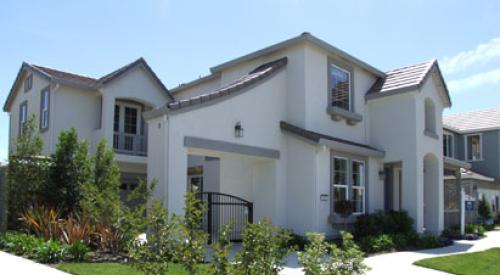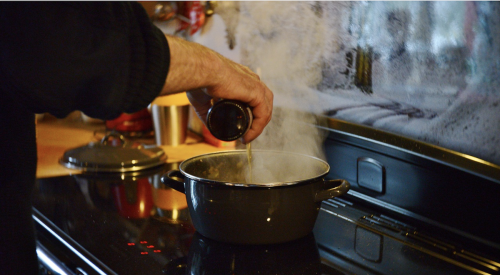NAHB research indicates a marginal decline to 994,000 new home sales in 2004, as housing starts decline 80,000 to 1.7 million. In turn, single-family housing starts are expected to decline 50,000 to 1.4 million while multifamily starts dip by 25,000.
Still big numbers, true, but a paltry drop in what promises to be another stratospheric year. Demand remains far from tapped out for builders seeking to lure buyers in the new and existing home markets.
Untapped First-Timers
A steady decline of first-time buyers, from 48% during the 1982-83 housing recession to 26% today, does not spell doom for demand, says Gopal Ahluwalia, vice president of research with the NAHB.
Citing the 35 million renters nationwide and the recent annual formation of 1.2 million households counted by the National Association of Realtors, he adds: "Of the more than 6 million existing homes sold in 2002, 42% were to first-time buyers.
"So is there demand for first-time home buyers? Yes. But the main issue may be affordability."
Bells and Whistles
Move-up buyers account for roughly one-quarter of new home sales and are prime targets for technological innovations that distinguish builders' offerings from each other as well as harder-to-retrofit existing homes.
"People like all the bells and whistles," Ahluwalia says.
Almost 80% of builders report offering structured wiring in their homes (using Category 5 cable and an RG-6 coaxial cable to at least three rooms in the home), and it's now being installed in 42% of new homes, according to NAHB research. Other technologies, too, are coming on strong (see chart).
Additional lifestyle-satisfying cues can be found in a different sort of technology: materials.
On the current buzz over the term maintenance-free, Ahluwalia says, "It's very generic. You can't define it, but there's nothing like it." He cites increased demand for easy-upkeep materials, from exterior brick siding to Corian kitchen countertops, in homes of all sizes.
Immigration and Hesitation
The last three decades, according to Census Bureau data, show a steady, three-decade rise in the age at which both men and women first marry; a ballooning in racial diversity, largely fueled by the Hispanic influx; and a rising share of one- and two-person households at the expense of larger four-and-higher households.
Above all macro-level trends, Ahlu-walia says immigration and home buying indecision rule the roost.
"We're expecting to see 1.2 million immigrants a year through the balance of this decade," he says. "Second, a lot of people are sitting on the fence."
Both factors point to a need for market understanding to entice buyers into the right new homes.
"Demand is still there, interest rates are low, home price appreciation is there, consumer confidence is going up, and we are not expecting interest rates to go up at least through the third quarter of 2004," says Ahluwalia, who expects a fractional rate increase.
And the getting still will be good for low, fixed-rate mortgages. They now ac-count for a record-high 68% of the $7 trillion outstanding U.S. residential mortgage debt pool, according to Stuart Gabriel, Ph.D., director of the University of Southern California's Lusk Center for Real Estate.
|
|||||||||||||||||||||||||||||||












